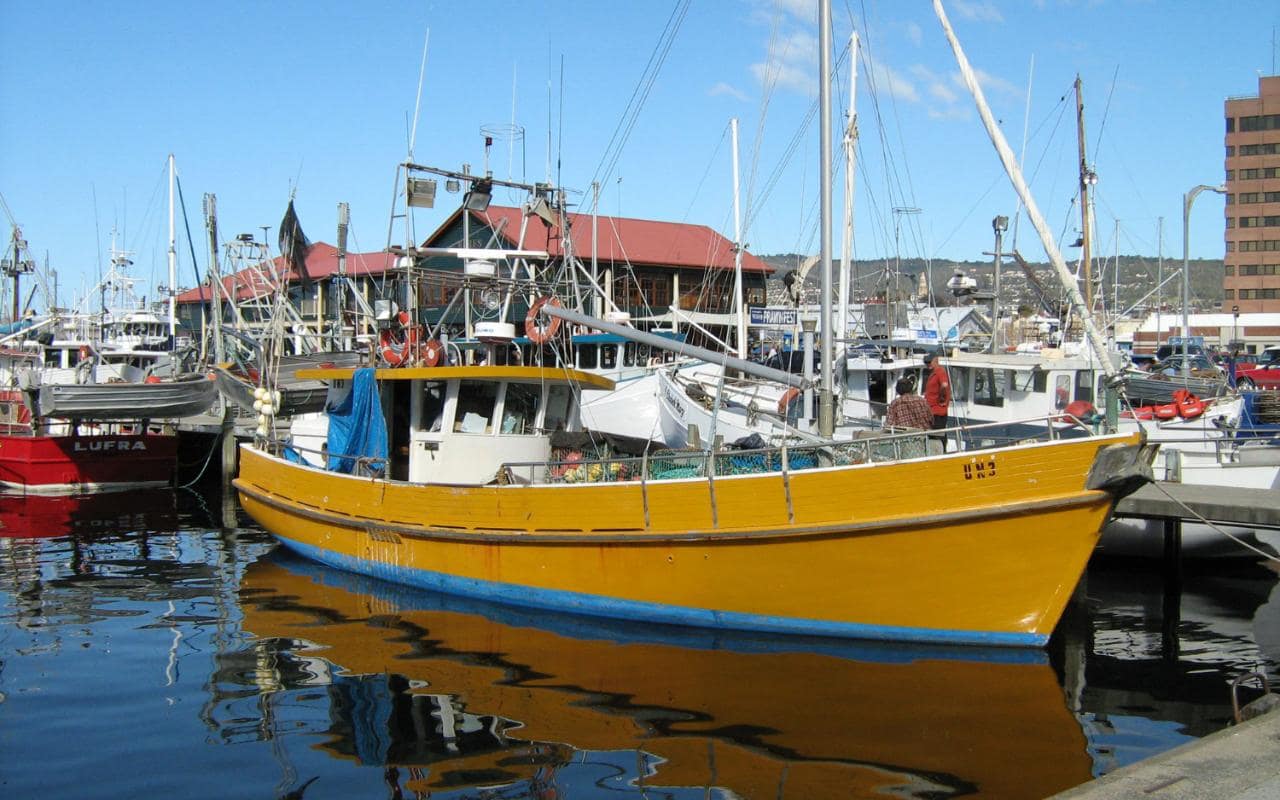
Tasmania’s capital, Hobart, inhabits a beautiful setting and makes an excellent base for exploring the rest of the island.

Hobart
Australia’s second oldest city combines a lively cultural scene with its rich colonial history, all set to the stunning backgrop of the coast and Mount Wellington. The buildings of Salamanca Place on the harbour are an exmaple of colonial architecture and now inhabits restaurants, cafes and art galleries.
Other attractions include Battery Point, the Maritime Museum of Tasmania and the Cascade Brewery, producer of Tasmania’s excellent beer and Australia’s oldest brewery.For magnificent views and a little adventure, Brake Out Cycling Tours organise bike rides down from the top of Mount Wellington, featuring some exciting off road sections.
Natural Attractions
Tasmania is rightly renowned for its beauty. Its combination of stunning beaches and rugged mountain has drawn comparisons with New Zealand and the Tasmanian Wilderness World Heritage Area covers 20% of the island. Cape Grim, in the northwest of Tasmania, lays claim to possessing the cleanest air and water on the planet.
Mt Field National Park
80km from Hobart, Mt Field is famous for its dense rainforest, spectacular waterfalls and the chance to see native wildlife, including wallabies and pademelons – another small species of marsupial. Russell Falls and Horseshoe Falls are among the highlights of the park.
Freycinet Peninsula
Freycinet Peninsula lies on the eastern coast of Tasmania, a two and a half hour journey from Hobart. The coastline is adorned with beautiful, pristine beaches and within Freycinet National Park there are endless opportunities for trekking and bushwalking. Two of the more popular shorter walks are to the lookouts above Wineglass Bay and the Friendly Beaches.
Wineglass Bay
From the carpark, less than an hour’s walk through woodland brings visitors to a lookout over Wineglass Bay. The view from here is simply breathtaking. A perfect curve of the whitest sand imaginable, fringed by azure water and lush green forest.
After admiring the view it’s well worth continuing downhill to the bay itself. Here you’ll get the chance to appreciate just how perfect this stretch of sand is, and paddle or swim in the crystal clear water. A walk to the southern end of the beach will reward you with magnificent views of the Hazards.
This walk takes 2-3 hours return in total.
Another option is to carry on and do the Wineglass Bay – Hazards Beach circuit walk.
For more info see: Guide to Wineglass Bay – Tasmania.
Cradle Mountain
The world heritage area of Cradle Mountain Lake St Clair is a magnificent national park, featuring spectacular mountains, lakes and gorges. As well as Cradle Mountain, the park also contains Tasmania’s highest peak, Mt Ossa, at 1617m.
The park is most famous for the Overland Track. This walk extends for 65km through the Tasmanian Wilderness World Heritage Area and normally takes five to six days to complete. There are camping facilities at regaular intervals and numerous detours along the route, as well as shorter day walks in and around the Cradle Valley.
For more information see: Hiking Tasmania’s Overland Track
Convict History
The same isolation that has helped to preserve Tasmania’s wildlife and keep much of the scenery unspoilt, also inspired its status as a penal colony. Reminders of Tasmania’s turbulent past can be found all over the island, such as the colonial architecture in Hobart ‘s Salamanca Place and the many bridges built by convicts.
Some of the best locations to discover this history are the former penal colony at Port Arthur, and the ruins on Maria Island and, in the harshest conditions of anywhere on Tasmania, Sarah Island.

